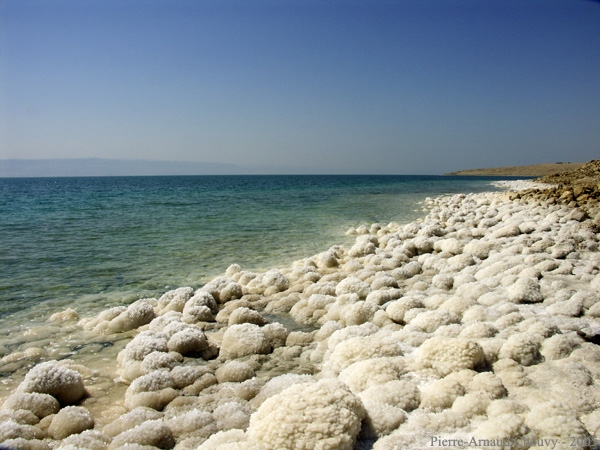Average Natural Concentrations of Metals on Earth
A mineral is a naturally occurring chemical compound. Metals rarely occur in their pure ("native") form, but are formed in nature combined with sulphur as minerals called sulphides or oxygen as minerals called oxides. An exception is gold which occurs in its pure metallic form, which is why it was the first metal discovered and used by humans. Metals are not usable as naturally occurring sulphide and oxide minerals. Apart from gold, metals only came into use when technology was devised to remove the sulphur and oxygen, a science called metallurgy. The ages of human development, Stone, Bronze and Iron are defined by breakthroughs in metallurgy. This is because without metals our best tools are made of wood, bone and stone. Durable and malleable metal tools enabled the Neolithic agricultural revolution and humans to settle, creating modern civilization.
Common metal-bearing minerals
A mineral deposit is a natural concentration of minerals in the earth’s crust. The degree of concentration is called the "grade" of a mineral deposit. An "ore deposit" is a mineral deposit which has high enough grades of metal that makes it economic to mine. Essentially this means that per tonne of rock containing the desired minerals, the costs of removing the minerals from the rock and separating the metal from the minerals are lower than the value of metal per tonne of rock. Rock worth mining is called ore.
While natural processes lead to local concentration of metal minerals, metals are distributed throughout the earth, even in seawater and organisms, including our own bodies. For example German scientist Fritz Haber considered extracting gold from seawater to help with Germany's desperate bid to make their war reparation payments after World War One, however gold concentrations in seawater were too low then and today for this to be feasible.
There are many natural processes which result in the concentration of metal-bearing minerals, creating mineral deposits.
The most important are:
salt from evaporation
- Deposition of salts and minerals from evaporating lakes and seawater (eg. salt, nitrate and potash deposits)
Heavy sulphide minerals settling to bottom of magma chamber deep in the crust form nickel, copper and platinum group metal deposits.
-
Ancient ocean chemical deposition of minerals on the seafloor. For example iron was deposited in layers on the then sea floor billions of years ago as the oxide mineral hematite. Today these layers of rich iron rock are called banded iron formations and are a major source of iron ore in Australia, Canada and Brazil.
Lateritic soil with concentrated aluminum ore formed by weathering
- The settling out of heavy minerals like sulphides or chromium oxides to the bottom of a chamber of cooling molten magma. This gravitational process results in concentrations of heavy minerals at the base of the chamber. Many nickel, platinum sulphide and chromium deposits form this way.
- Simple weathering of rocks can leave an oxidized soil residue of concentrated metal-minerals. In tropical environments rocks that do not themselves have sufficient metal to be mined are weathered to a soil called a regolith or laterite. Aluminum and nickel oxides can be concentrated because other elements have been washed away as part of the weathering process. Tropical countries reap the rewards of their climate by providing the world with their weathered aluminum rich rock called bauxite, the world’s source of aluminum. Nickel Laterite Deposits are also formed by weathering and provide much of the world’s nickel.
Panning for alluvial gold in the Irrawaddy, Myanmar.
- Alluvial or placer river deposits are formed by the ravages of weathering on earth. For example, the Himalayas are being washed away and levelled at the rate of 1 kilometer of elevation every million years. Rocks containing metal minerals are broken down by this weathering, eroded and transported away as boulders, gravel and sand sized particles in streams and rivers. Heavier gold, platinum, tin and uranium minerals settle to the bottom of the streams and rivers where they are concentrated. This is why stream beds, ancient and current, are where prospectors look for gold nuggets and other heavy metal minerals.
"Old Faithful" Geyser, Yellowstone geothermal system, USA
- Hydrothermal mineral deposits are formed when minerals are deposited and concentrated from hot (hydrothermal) waters that are superheated by molten magma and ascend to spring at the earth's surface. The sulphide-metal minerals that hotsprings deposit are generally concentrated in the cracks and faults along which the fluids rise to the surface. Most gold, silver, copper, lead, zinc, molybdenum metal deposits are formed in this way. Geysers like Old Faithful in Yellowstone are the surface manifestation of these hydrothermal systems which can provide geothermal power as well as mineral resources. But hydrothermal vents don't just occur on land; they can vent in the ocean where they are called "black smokers". Black smokers active today deposit piles of iron, copper, zinc, lead, silver and gold sulphide minerals over vast areas of the sea floor. Like geothermal hotsprings on land they are modern analogues for ancient mineral deposits that formed in the same manner. Watch the great video below to have a better understanding of these remarkable features dotting the seafloor.
An invitation to learn more!
These are some of the ways how metal minerals like sulphides form but it is important to remember that not all metal minerals are valuable. For example the most abundant sulphide on earth is the yellow mineral pyrite, known as fools gold because it has no economic value and it’s colour. When rocks containing sulphide minerals like pyrite are exposed at the earth’s surface they rust because the sulphur in sulphides, when exposed to air and water, is removed and replaced by oxygen. We shall see that this weathering process is extremely important to the economics of mineral deposits. The natural weathering of sulphides also has environmental and social implications which Mining Focus will illuminate. To learn more visit the next installments in the Geology series: Weathering and Acid Rock Drainage.




